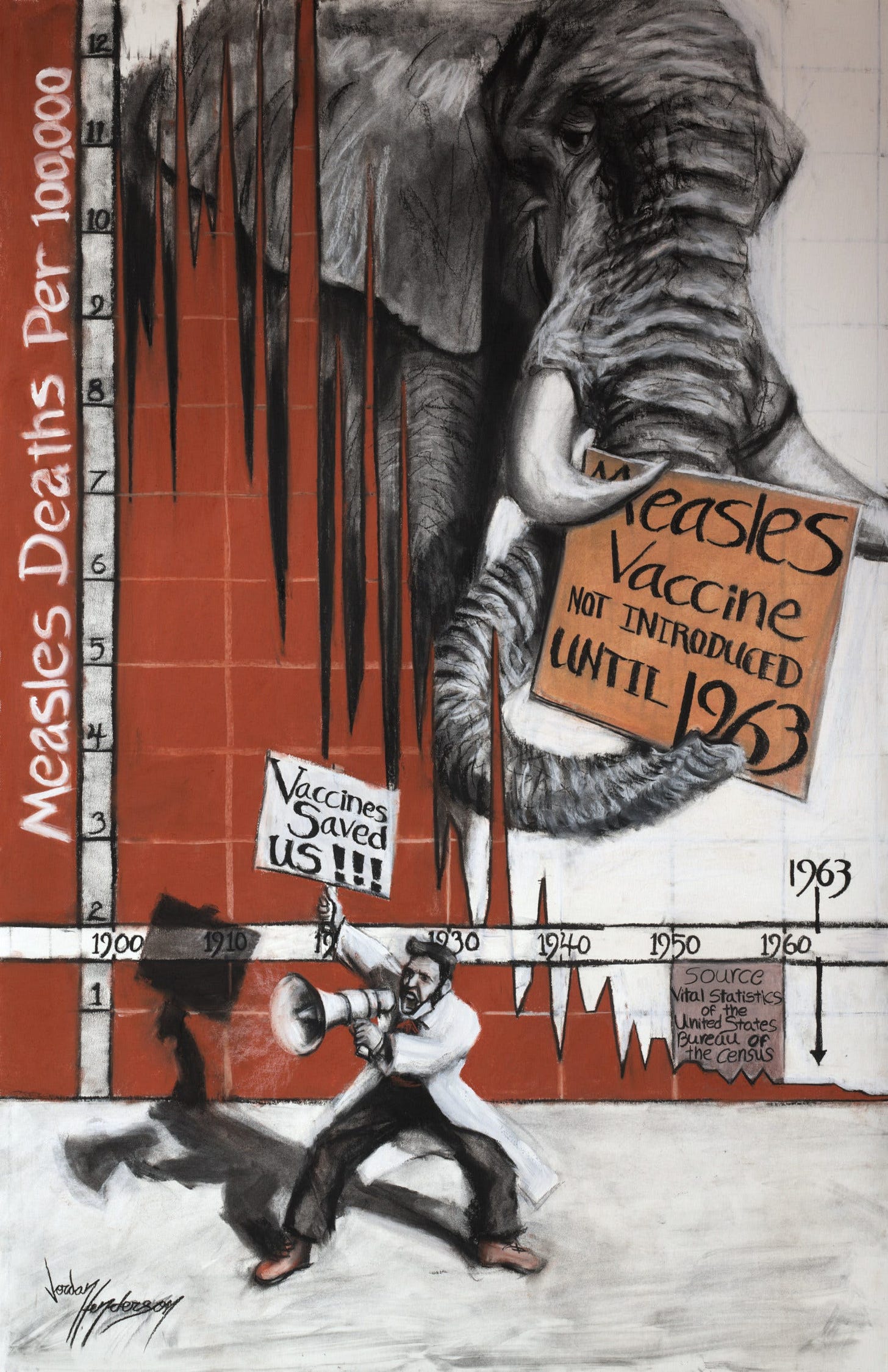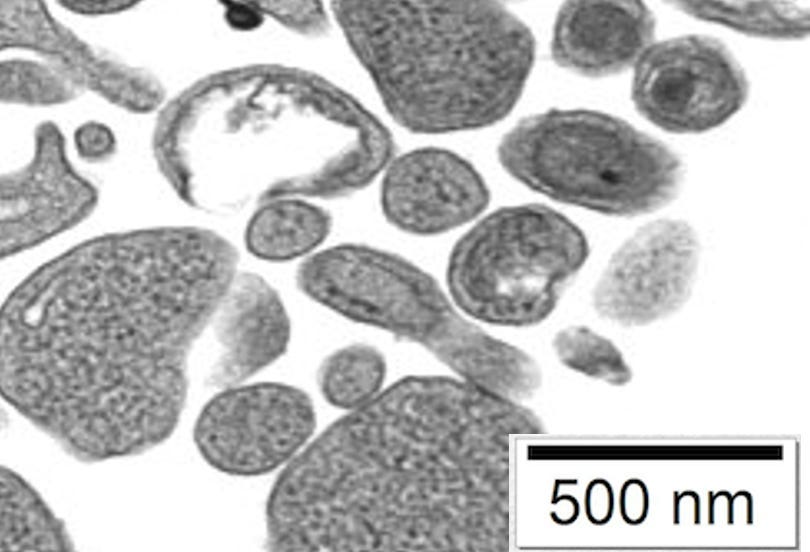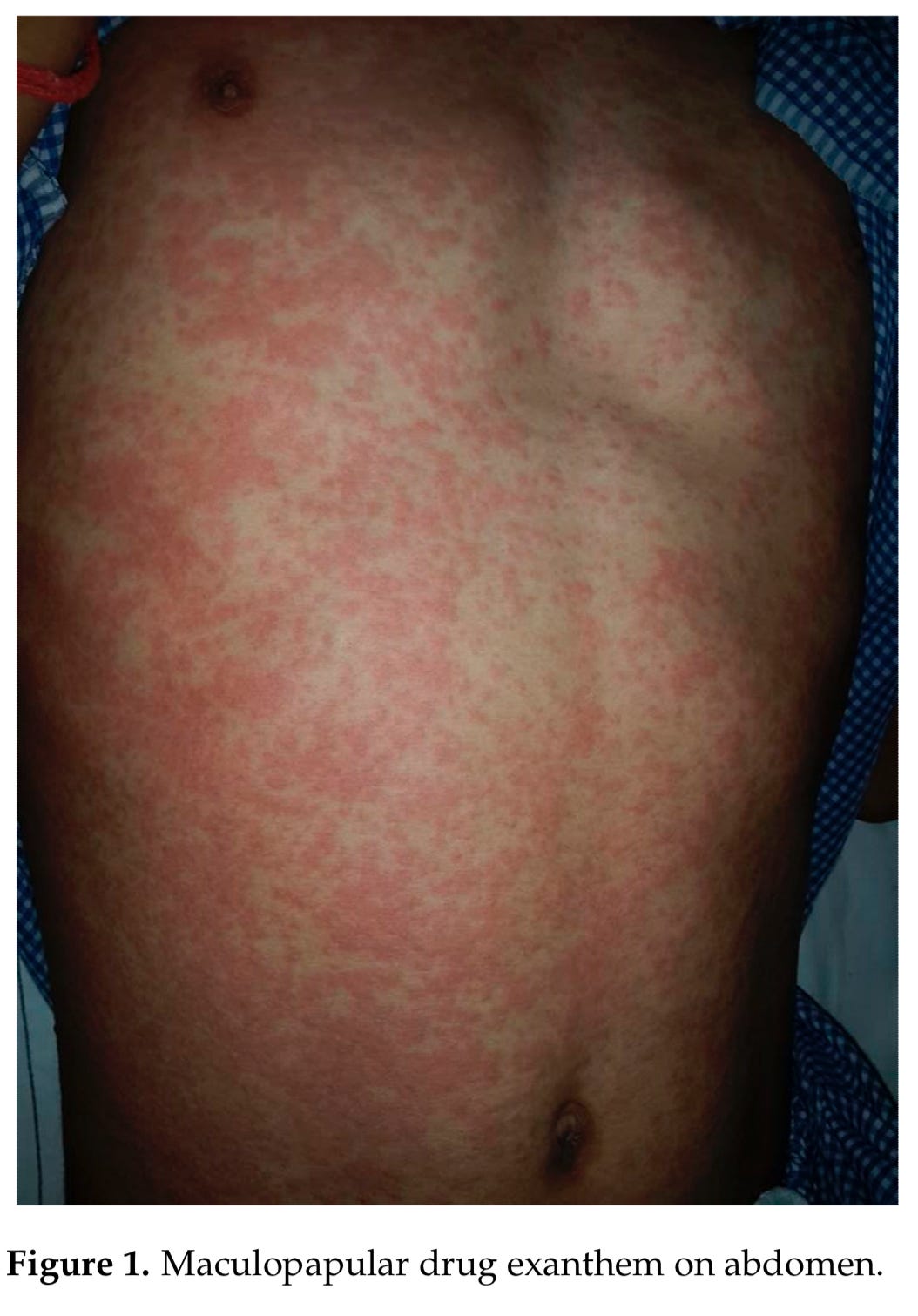The measles virus began as an imagined construct to explain why people get sick. A particle was not observed first and subsequently a virus theory was developed.
As described by a 1924 article, researchers were unable to consistently observe any microbe in the bodily fluids of people with measles. Despite this, they presupposed that a minute pathogen existed that could explain sickness—what came thereafter arose to fulfil the presuppositional premise.
“Nevertheless, the search for the parasitic invaders by microscopic examination has failed to demonstrate constantly or consistently present forms in the Koplik spots or skin lesions of measles. Microscopy of the blood has likewise afforded only negative results; yet there are evidences of the presence of the virus in the blood stream, if one may trust the reports of experimental inoculation of measles in man with the blood of measles patients. The tests on animals have proved somewhat unsatisfactory because of the difficulty of identifying the exanthems. The "experimental measles" produced in monkeys by various sorts of inoculation are suggestive, though they by no means offer exact proof of the susceptibility of these animals to the human disease. The conclusion that the virus of measles is filtrable rests primarily on such animal tests. Sellards prefers to consider the filtrability an entirely open question.”
The measles “virus” was nothing more than an unseen, imagined entity—brought about by uncontrolled and artificial animal experiments.
However, the results were often irregular or entirely negative, according to a publication from 1962.
“Reproduction in monkeys of signs of mild measles after inoculation of bacteria-free materials from patients was reported subsequently by a number of investigators, although the results were often irregular or entirely negative.”
In 1924, Dr. Andrew Sellards published A Review of the Investigations Concerning the Etiology of Measles. He describes how the symptoms of the monkeys experimented upon were “rather vague”, and that the scientists were plagued by “conflicting results” and “marked variation”.
These inconsistent results are further weakened by the fact that comparable results could be produced in humans by the injection of a mixture of normal blood from healthy individuals.
One person developed “a fairly extensive maculopapular eruption appearing first over the chest and then over the arms.”
Another subject exhibited “a well-marked erythema which was widely distributed over the chest, back, abdomen and extremities.”
Virologists did not have a laboratory method to detect the presence of an alleged measles virus, as acknowledged by an article published in 1950.
“Further difficulties in the study of measles have been the inability to obtain experimental measles in any host less inconvenient and expensive than the monkey, and the absence of a laboratory method for detecting the presence or quantity of virus.”
Instead, they based their belief on fallacy loop of circular reasoning. In 1948, virologist Wendell Stanley stated that evidence for the existence of a virus was provided by the manifestation of disease.
“The sole means of recognizing the existence of a virus is provided by the manifestations of disease”
This is because the “virus” was nothing more than a concept—an idea rather than a concrete entity.
“True measles, called rubeola, is caused by a virus that scientists have so far been unable to isolate”
It wasn’t until 1954 that the measles virus was first claimed to have been propagated in the laboratory.
“A possible lead towards developing a preteventive vaccine against measles has been reported by Dr. John F. Enders, of Harvard Medical School, who won a Nobel prize for his polio research.
He announced Wednesday "very suggestive" evidence of the long-sought isolation of the elusive measles virus—and of possible means for its laboratory growth. The method described uses a "tissue culture" method like that which paved the way for development of the Salk vaccine for polio.
Enders told an audience of scientists at the National Institutes of Health that he and assistants had found in washings and blood of measles patients "an agent" which has passed certain tests indicating it may be the actual causative organism of measles.
It remains to be proved, he said, that it actually is the measles virus”
In a 1954 experiment, John Enders postulated that signs of deterioration in organ tissue in vitro would indicate the presence of a measles virus, despite the fact he didn’t observe any virus particles.
“Nearly all that is known about the virus of measles has been learnt since 1954.”
However, several researchers subsequently reported that the same lab-created effects occurred without the addition of a presumably infected specimen.
In 1956 for example, virologist Gisela Ruckle observed the same degenerating changes attributed to measles virus in uninoculated cultures, and in cultures inoculated with clinical material other than from measles patients.
“The examination of the stained preparations of one batch prepared on June 23, 1955, revealed the presence of cytopathic changes identical with those induced by measles virus in the control, as well as in the cultures inoculated with clinical material other than from measles patients … A greater number of uninoculated cultures derived from cell batches prepared on June 29, 30 and July 8, were examined and also showed changes, in a number of cultures, which had been associated until this time only with measles virus.”
These spontaneously degenerating cultures were also shown to be “immunologically indistinguishable from human measles virus”.
In light of these problems, virologists admitted in 1959 that their laboratory tools could not establish the existence of a measles virus.
“Agents that are identical to measles virus in terms of their serological relationships, cytopathological effects and range of tissue culture susceptibility have been found in uninoculated cultures (Ruckle, 1956; Brown, 1957). In view of these complications, cultures of monkey kidney cannot be considered a suitable tool for the isolation or propagation of measles virus. Even if, by careful serological and cytological tests, one identifies an agent grown in monkey kidney as measles virus, there can be no certainty that it did not derive from the cultures themselves.”
Moreover, these virologists acknowledged that no virus particles could be identified in tissue assumed to be infected with measles virus.
“Electron microscopic observations of amnion cells in cultures infected with measles virus have been reported (Baker et al., 1957), and similar studies are in progress in our laboratory (Reissig, 1958). Many abnormal structures are present in the infected cells, but none of them has yet been identified with the virus particle.”
Virology had refuted itself. Despite access to electron microscopy, virologists could not locate any physical entity that could be identified as a measles virus, and their indirect laboratory tools turned out to be non-specific.
“The possibility remains, however, that agents antigenically identical to measles virus might be found in uninoculated monkey kidney cultures.”
It was not until 1961 that Anthony Waterson et al. claimed to have imaged the elusive measles virus.
“Although it has been possible for many years to grow the virus of measles in experimental animals and, more recently, in tissue culture, information about the nature of the particle has been scanty.”
They located some dots in tissue claimed to have been infected with measles virus. These particles were declared to represent measles virus, despite that the biological function of these structures remained unestablished.
Furthermore, it is known that a myriad of minute vesicular particles can be found in normal tissue, as seen on the image below.
The symptom complex termed ‘measles’ does not require the existence of a virus. The same set of symptoms can be caused by various non-microbial factors, such as drug eruptions, as seen on the image below.
“The stimulating effect of salvarsan [arsenic compound] on the skin is seen in the way it causes eruptions such as urticaria, and erythemas that may simulate the rashes of measles or of scarlet fever.”

















These viruses are damn hard to find, aren't they? ✌️❤️😊
It seems there can be another Court Case for "Coronavirus" and every other "virus". "Basically, judge, show me the virus."